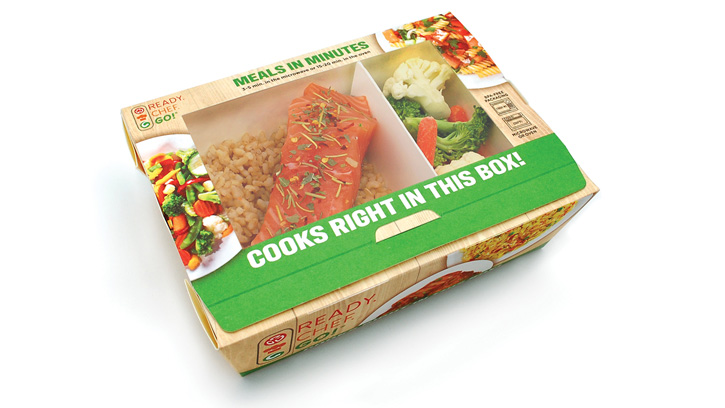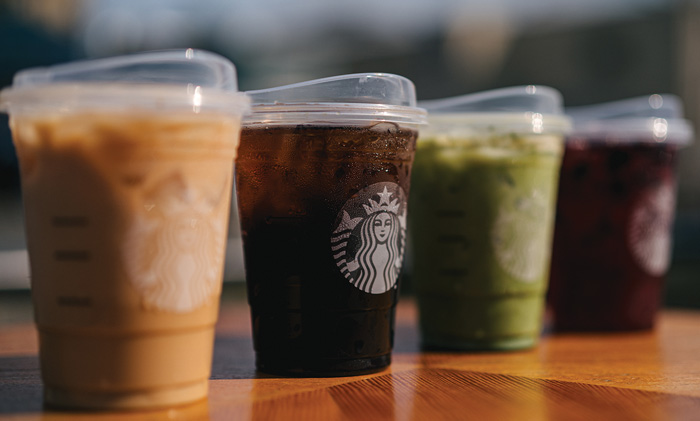Serving Up Well-Done Foodservice Packaging
Packaging | APPLIED SCIENCE
Foodservice packaging is attracting increased interest as more consumers opt for takeout and delivery, while operators continue to focus on food safety and efficiency behind the scenes.
Packaging design and material science serves the front-of-house (FOH) and back-of-house (BOH) foodservice environments differently. In the front of the house, concerns about sustainability, delivery, and customer experience dictate packaging design and materials. However, in the back of the house, operational efficiencies and employee use are the driving factors for packaging decisions.
Optimizing BOH Operations
Demands on packaging for BOH foodservice operations show no signs of lessening. Packaging that facilitates food safety remains paramount. As supply chain disruptions occur, fine-tuned outer or tertiary packaging is critical to ensuring that food and ingredients arriving BOH are in peak condition and in stock when needed. For example, tertiary packaging that can retain refrigerated or frozen temperatures longer when intermittently and inadvertently stored out of cold conditions provides an extra level of food safety and quality. This results in more food that arrives BOH in acceptable condition and fewer out-of-stocks.
Packaging optimization is also crucial as supply chain shortages extend from food ingredients to packaging. Optimization of tertiary packaging to allow for multiple products on the same pallet or higher pallet density improves pallet efficiency, decreases transit costs, and lowers the carbon footprint of the packaging. Likewise, packaging that is minimal and/or can be minimized or stacked and readily sorted for use can help maximize limited BOH operational space.
Employee-Centered Packaging
While foodservice customer levels commonly have peaked at mealtimes, the peaks and valleys are more pronounced now than they were before COVID-19. This has resulted in higher demand for packaging that focuses on assisting BOH employees in food preparation.
Employee-centered packaging can optimize employee time and energy by reducing preparation time and training, aiding meal preparation, and easing worker stress. This type of packaging demands design innovation as well as advanced material science to consolidate the tasks and food that employees will need at one workstation and provide meal preparation guidance. For example, premeasured ingredients located in specific places within one BOH meal kit package can guide employees on the proper amount and order of ingredients for meal construction. This ensures customers have a consistent dining experience while reducing meal preparation time and effort.
From a material science perspective, combining items within a kit often requires that packaging for the individual ingredients has the required oxygen, water vapor, and odor barriers.
Designing for Food on the Go
Even though foodservice sector revenues fell 30% in 2020, according to the National Restaurant Association, the use of foodservice packaging increased as some restaurants switched to takeout-only policies. Sixty percent of Americans now order takeout or delivery at least once a week, and half of those consumers use a delivery service, reports Statista. Consumers and delivery employees use a variety of means to transport their food, exposing it to many different environmental conditions.
Designing foodservice packaging for delivery agility in terms of time, exposure temperature, and transport mode is imperative. En route to consumers, food in foodservice packaging may be stored in heat lockers and combined with other packaged foods prior to consumption as well as being delivered directly to consumers. Tamper-evident packaging that demonstrates that viral transfer or contamination has not occurred is critical for foodservice packaging that contains products that will be delivered to consumers. For example, Inline Plastics Safe-T-Fresh zipper-pull tear strip hinge packaging provides tamper evidence and prevents leaks and contamination.
Branded Customer Experiences
In the front of the house, foodservice packaging also can extend brand connections during consumer use and consumption. For example, when consumers open Church’s Chicken’s icebox pie product packaging, they interact with bright yellow lemon wedge graphics on shaped cutouts surrounding the lid area of the paperboard carton. And brand identify transfers into consumers’ kitchens when they use the Ready. Chef. Go! Cookpac paperboard-based carton from LK Packaging to cook or heat products.
Sustainability Front and Center
Making packaging for FOH foodservice more sustainable involves reducing food waste, chemicals of concern (COC), and packaging components.
Nearly 9 million tons of food waste are associated with FOH foodservice each year, according to the national nonprofit group ReFED, representing 70% of foodservice waste and 11% of all food waste. Intelligent and active packaging and better package design can help prevent this waste by extending shelf life and indicating to consumers that a product is safe to eat.
Active packaging, such as packaging that releases preservation gases and absorbs oxygen, can extend FOH product shelf life. For example, mold is reduced when oxygen levels are below 3%, which can be accomplished with vacuum packaging, gas flushing, and/or oxygen absorbers and high oxygen barrier packaging.
Resealable packaging that also is easily stored, stacked, and handled by consumers encourages the storage of excess food. Critically, consumers need to be confident that food is stored safely within foodservice containers for consumption later.
When intelligent packaging—such as time-temperature integrators (TTIs) that match kinetics of quality loss or food safety (microbial) growth—is applied to foodservice packaging, only food unfit for consumption needs to be thrown away. For example, TTIs can replace “sell by” times and dates that are chosen irrespective of the variable temperatures the product may experience, such as when packaged food is taken out of the frozen environment for sale (known as slack). Providing static “use by” or “best by” dates results in more food waste and reduced food safety, since food may be discarded or consumed regardless of whether it is still safe and/or of acceptable quality to eat.
Chemicals of Concern
Many COCs provide grease and oil resistance in foodservice package forming, even though COCs such as the per- and polyfluoroalkyl substances (PFAS) used in packaging and other industries since the 1940s are known to cause cancer. In a number of countries, perfluorooctanoic acid and perfluorooctane sulfonate have been replaced in food packaging industries by other PFAS and less problematic alternatives.
Diffusion models that determine the maximum diffusion possible by employing boundary conditions of high initial concentration to 0 concentration demonstrate that the amounts of COC transfer are below safe threshold values in foodservice packaging. However, the presence of COCs and PFAS—in particular in the postconsumer environment of recycled packaging and within compost, litter, and unlined landfills—presents a public health crisis. Standard recycling processes do not remove PFAS and other “forever chemicals,” and they can be released from the packaging when it decomposes in compost, litter, or active improperly lined landfills.
The packaging industry is expanding efforts to remove COCs from packaging, including foodservice packaging. Numerous cities and municipalities have banned PFAS and other COCs ahead of the U.S. federal compliance reporting date that is scheduled to be set soon. In addition, many entities, such as the Center for Environmental Health and Clean Production Action, certify that foodservice packaging is devoid of COCs. However, inks, adhesives, and other additives can contain COCs, so evaluating the final package is necessary to ensure that certification is valid.
FOH Packaging Reduction
The U.S. Environmental Protection Agency reports that plastic and paper foodservice packaging represents only 2% of all materials discarded by weight. Straws, often cited as beach waste, make up only 3% of beach cleanup waste, according to Ocean Conservancy, a nonprofit environmental advocacy group. But foodservice packaging is more apt to be thrown away as litter than recycled or disposed of at home, where cleaning and curbside pickup of recyclables can take place. And the lack of success in littering deterrence, in addition to collecting and sorting inefficiencies associated with small-size foodservice packaging, has led to removal of packaging, opt-in package design, and legislation to remove some packaging from foodservice.
Design innovation to eliminate the need for small foodservice packaging items such as straws is advancing rapidly. For example, the implementation of Starbucks’ strawless lid design has resulted in one billion fewer straws being used per year. Opt-in legislation calls for foodservice operators to ask consumers if they wish to receive utensils, straws, packets, and other small items.
Legislation aimed at single-use plastic in foodservice is increasing. “Pending legislation targets single-use plastic such as foodservice packaging in particular ways,” says David McRobert, a lawyer in private practice in Ontario, Canada, who helped draft the province’s waste reduction and recycling regulations in the early 1990s and has audited Canadian waste management trends at the provincial, federal, and municipal levels. “For example, the Canadian federal government is slated to ban the manufacture, import, and sale of single-use plastic foodservice packaging such as cutlery, foodservice ware, stir sticks, and straws as early as late 2023 after a one‐year transition between the publication of the regulations and enforcement.
“However, exemptions exist,” he adds. “Only single-use plastics made from extruded or expanded polystyrene foam, polyvinyl chloride, oxo-degradable plastics, or containing ‘carbon black’ are entirely banned. This is primarily because markets for these materials—if collected by the municipal or industrial, commercial, and institutional recycling operators—have not been developed for these packaging components and pose environmental risks that cannot be mitigated. Further, commercial and institutional settings such as care facilities are exempted from the ban on single‐use flexible plastic straws to permit their use by patients in those settings.”
Learning Objectives
1. Understand how back-of-house foodservice packaging improves food safety, employee workloads, and logistics.
2. Learn how front-of-house foodservice packaging is designed for optimal use by consumers.
3. Assess more sustainable foodservice packaging alternatives.




